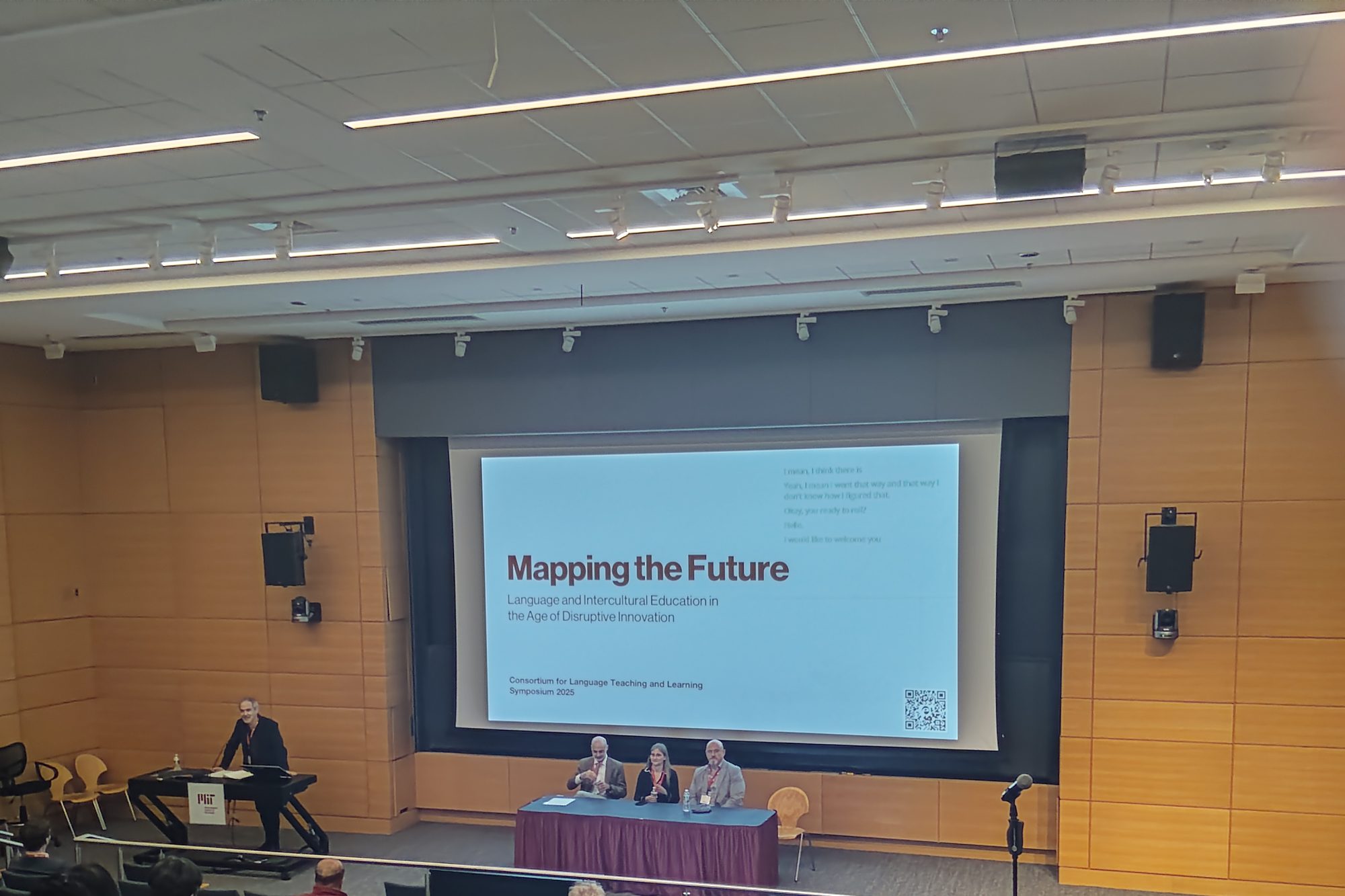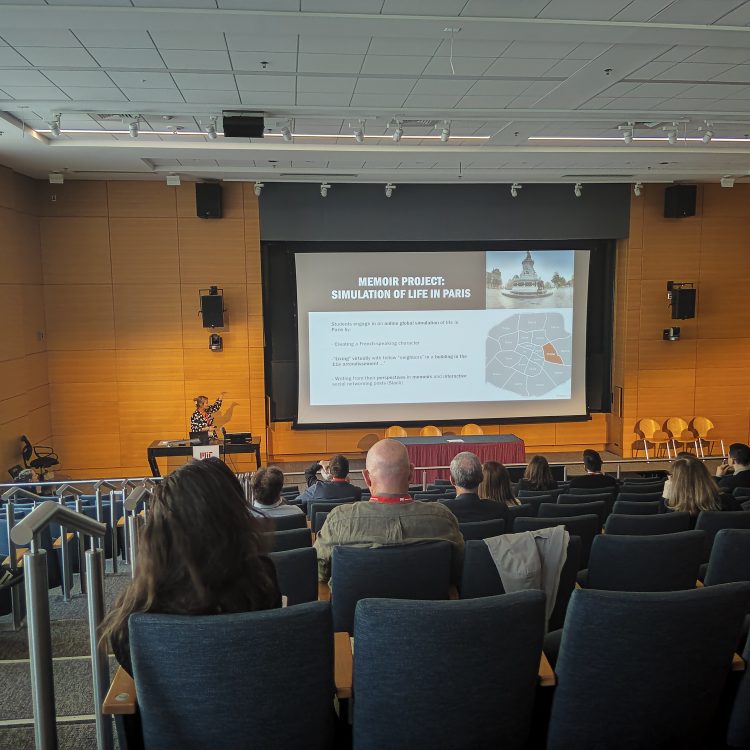
Should A.I. be used in second-language education? If so, how? What can be done to keep both educators and those they educate from falling into the numerous pitfalls that come with this new technology? What can be done to maximize the good A.I. can do for the field of language studies? On the 2nd and 3rd of May, 2025, MIT hosted the annual symposium of the Consortium for Language Teaching and Learning in the Tang Center, This year’s conference had the official title of Mapping the Future: Language and Intercultural Education in the Age of Disruptive Innovation—disruptive innovation being, of course, not limited to A.I., but certainly covering a lot of it.
Second-language instructors and professors came from the entire consortium and even outside it, with an estimated attendance of about one hundred and fifty, traveling from institutions such as Brown, Stanford, and, with somewhat less challenging travel times, Harvard University.
A.I. was the direct focus of many of the presenters. The general consensus was that there is no question about whether A.I. is going to be used in language classrooms, because current students are going to use it, whether or not their instructors tell them to do so. The real questions involve the best ways to teach them to use it well, or at least not harmfully, and what new wonders might be possible as classroom tools are built and curricula created which are informed by the new technology.
In these directions, presenters explained and demonstrated exercises and showed research projects they had used and tested in their own classrooms. Angela Lee-Smith (Yale) discussed how her students wrote lyrics in their target language, and then used A.I. software to produce high-quality music in a variety of genres and styles to go with the lyrics. Grit Matthias Phelps (Cornell) created limited micro-chatbots with and for her German students, to ensure those students would get better quality and more easily guided interactions than what might be available with larger, commercial bots.
There were even a couple of panels which were not directly about A.I. at all, such as Dinny Risri Aletheiani (Yale), with her masterful use of VR to create a three-dimensional soundscape and virtual environment duplicating a space in Jakarta for students of Indonesian. There was an industry panel, in which experts from places such as Duolingo, Avant, and the Language Technology Learning Center discussed the state of commercial language teaching, and especially language teaching apps, and their relation to academia. And, notably, there was a student panel, in which MIT undergraduate language students were asked about the differences between in-person and online instruction, what they think about modern language pedagogy, and, of course, what they think about A.I.. (Capsule summary: they have all used it, but seem aware of the ways it is not reliable as a search engine and conversational partner, and do not rely on it much. This may or may not be representative of students in general.)
Both keynote speakers had major A.I. projects which are already in use at their respective universities. Jonathon Reinhardt (University of Arizona) kicked off the conference with the language app he’s helped put together for his students’ use, which uses his own image and voice as the video respondent who teaches the students. Such avatars have come a long way from the uncanny valley days, which is particularly noticeable when the real person and the video are standing next to one another. And Nicole Mills (Harvard) delivered a closing keynote in which she urged her listeners to use current uncertainties as a catalyst for the creation of new and reinvented pedagogies, before demonstrating the simulation of a real eleven-year-old Parisian boy which she now uses in her classroom. The real child collaborated in the creation of a virtual teaching assistant with his face, body, and voice, who can hold conversations in French with students and supply personalized vocabulary lists, among many other useful abilities.
In the recent years of repeated, rapid change, from the COVID pandemic to current fiscal shakeups, many people have felt as though they’ve been floundering, especially in the face of the new A.I.. This conference was full of people actively leaning into the discomfort of the truly new, demonstrating care for learners by listening to them in a space in which they are not often present, and allowing vital cross-pollination of the many differing approaches language instructors at our top institutions have taken to A.I. questions. The symposium may not have been a complete cure for floundering, but its two days held a heavy and yet not unwarranted weight of optimism.

